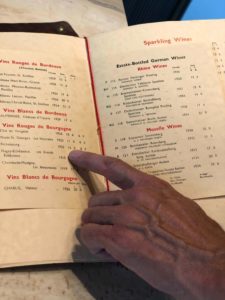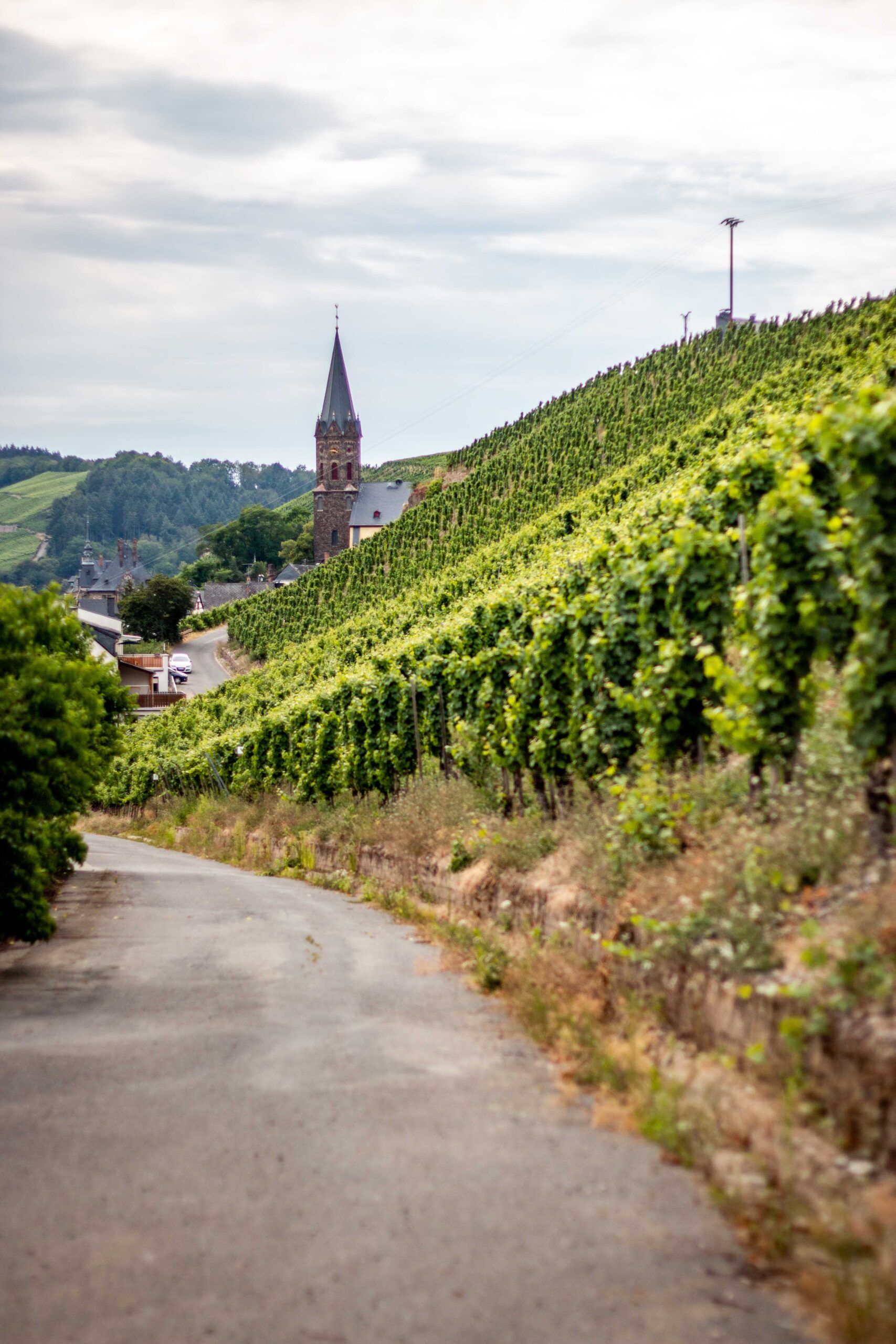We are allowed out of the country! Yes! Because of those months of Covid misery, you’d almost forget that there are great wine regions around the corner from Amsterdam, well, almost around the corner.
I left for the Mosel region on a self-organised wine trip to take a closer look at this well known Riesling area. Questions I asked beforehand: Are all Mosel wines sweet or semi-sweet? Are those slopes really that steep? Can you still tell that this is the oldest wine region in Germany?
History of the Mosel
Viticulture in the Mosel region dates back to the Romans. Around the year zero, the Romans planted vines around the city of Trier, a very important city in the Roman Empire. After the fall of the empire, the monks took over business. Wine knowledge was taken by the monastic order of the Cistercians from Burgundy to the Mosel.
At the end of the nineteenth century, the area experienced an enormous revival. The Riesling wines from the steep Mosel area became world famous. These wines were in great demand in high circles and would show on the wine lists of the most chic hotels and restaurants among the stars of Bordeaux and Burgundy, often for a higher price!

The wars obviously messed up a lot and after the Second World War the demand for fruity sweet wines increased. This resulted in the planting of new grape varieties and an increase in the number of hectares in the area, at the expense of quality.
Fortunately, a true Renaissance began in the nineties. Tough and quirky winemakers (read more about them in another article) started, often with nothing, beautiful wineries that today have become the pride of the Mosel area. These winemakers worked from the idea of tradition and based their vision on results achieved in the past. If at the beginning of the 20th century people were willing to pay more for a Mosel Riesling of the steep slopes than for a Château Mouton – Rotschild, there had to be a lot of gold in that soil.
Grape varieties in the Mosel
Of the 8800 hectares of vineyard in the Moselle area, sixty percent of the planting is Riesling. Followed by Müller-Thurgau, Elbling, Pinot Noir, Dornfelder and Pinot Blanc.
Wine-growing areas
The Mosel wine region is one of the thirteen official wine regions of Germany and is divided into six Bereiche, fear not, this is the German word for wine region, not a scary bacteria.
These are in short: Burg Cochem, Bernkastel, Moseltor, Obermosel, Saar, Ruwertal.
The best wines in the Mosel may mention Grosse Lage on the bottle, this has been determined by an association of winemakers (VDP) who have distinguished the best individual vineyards. These vineyards are comparable to French Grand cru vineyards. The dry wines from these vineyards may mention Grosses Gewächs on the bottle.
Climate and soil in the Mosel area
The wine region has a cool continental climate. Some of the best vineyards can be found on the steep slopes facing the South, sometimes on the right bank, sometimes on the left bank due to the twists and turns of the Moselle river. The sun reflects in the water and provides enough hours of sunshine for the grapes to ripen optimally even in the colder months.
The soil composition of the most famous areas of the Mosel goes back more than 400 (wow!) million years to the Devonian era when the Mosel area was at the bottom of a large ocean. As the continents shifted and the seabed was cruelly pressed together under high temperatures to form a mountain range, the slate that now forms the bottom of the vineyards in the Mosel emerged.
Blue-grey slate is found in the majority of the vineyards and enriches the soil with an enormous amount of minerality. It also provides very good drainage for the rainwater and retains heat so that the grapes do not suffer from the cold in the autumn nights. In some places around the Bereich Bernkastel, the soil is covered with red slate. This is blue slate that was burned during a volcanic eruption and is therefore coloured red. Even rarer is the soil full of volcanic rock that can only be found in part of the Ürtziger Würtzgarten vineyard.

Different types of slate soils
Blue/grey slate
Most occurring. Main component is potassium. Gives elegant, crispy Riesling wines with aromas of yellow and white fruits such as green apple, peach and citrus, floral notes and medium acidity.
Red Slate
Rare. Main ingredient is iron. This makes for a tastier, more earthy and richer flavor. Red and orange fruits like pink lady, apricot, mango, orange. Tropical and round.
Volcanic rock
These rocks are formed by magma and possesses a lot of iron. The wines are full-bodied, fruity (pear, strawberry) and very spicy, think of Provencal herbs and chilli. High acidity.

Wine style in the Mosel
Despite the fact that the Mosel is mainly known for its beautiful sweet wines that create a worldwide furore, the dry wines from this area are also of very high quality.
Mosel wines are known for their light-footed character, fruit and minerality (due to the slate soil!) predominate. The most striking feature of this region is the low alcohol percentage in the wines. Something the winemakers are very proud of and certainly strive for. The percentages vary from 6% (in the sweetest wines) to 12%. The low alcohol percentage makes the wines easily digestible and elegant, not to be confused with little taste or aroma. Mosel grapes ripen long because of the cool climate and the Riesling grapes get the chance to ripen fully and develop beautiful intense aromas. There is great concentration and beautiful full acidity.
The winemakers in the Moselle work from a strong sense of terroir. Every winemaker I spoke to indicated that his goal is to make a Riesling that reflects the terroir where it grows. Oak is therefore handled with great care. Large barrels of 2000 and 3000 litres are the norm, some producers even work completely without oak. For example Schloss Lieser.
Making wine in the Mosel
Making wine in the Moselle is extremely difficult. The slopes are terribly steep which makes machine work almost impossible. From pruning to harvesting, almost everything is done by hand, sometimes even ropes are used to prevent slipping. Erosion by rain and wind provides extra work, the slate topsoil slides down and creates roadblocks, among other problems. These stones are often collected by hand and brought back up again. What a job!

Read more about my adventures in the Mosel in the article about my winery visits of top producers and hop to my Instagram for more about my visit to the Mosel region.

